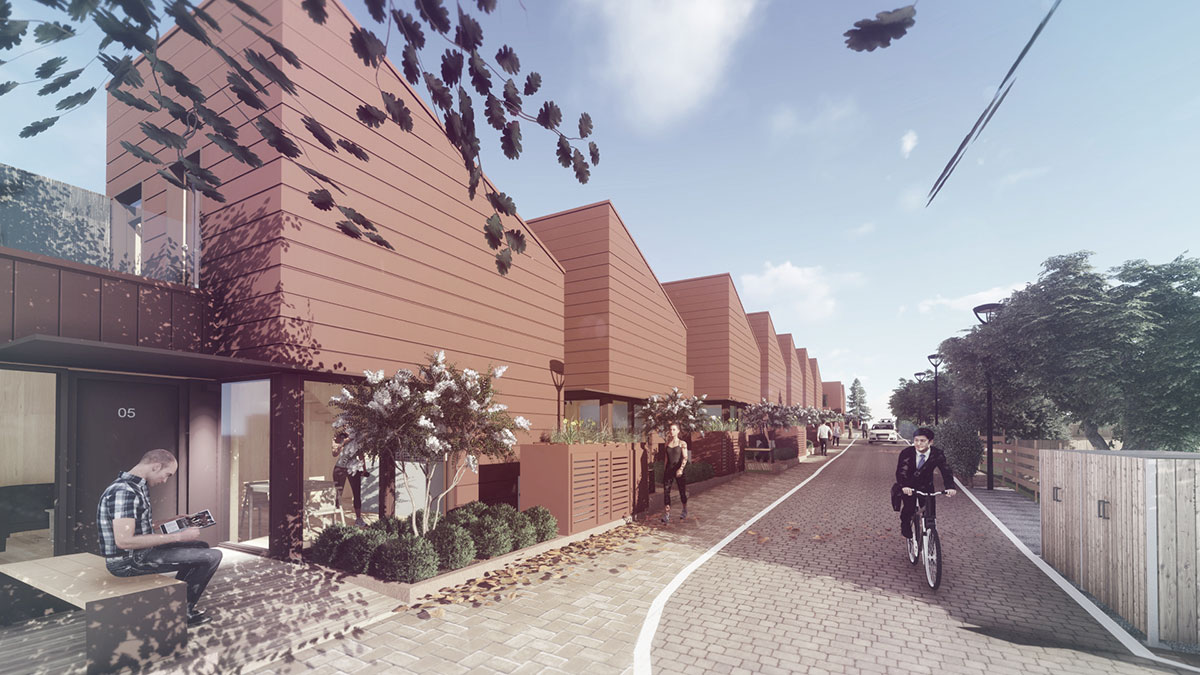#{Title}
#{Copy}
 By Rachel Hough, Senior Town Planner
By Rachel Hough, Senior Town Planner
More than three quarters of local authorities within the UK have now declared a climate emergency in a bid to decarbonise. With the built environment responsible for around 40% of greenhouse gas emissions worldwide, the work undertaken by their planning departments, and the wider town planning system, is vital to tackling climate change.
Effective policy-making and decision-taking has the power to ensure that new development incorporates the necessary measures to reduce carbon emissions, to adapt to the effects of climate change and improve environmental outcomes for all.
However, despite a series of political shifts over recent weeks, months and years, the relaxation of existing planning rules has been a common thread throughout successive government proposals for planning reform. So just how would deregulation affect planning for climate change?
Thus far we’ve seen ‘Growth Areas’ mooted by 2020’s Planning for the Future White Paper; the proposed replacement of the Environmental Impact Regulations with a new streamlined system of Environmental Outcomes Reports in the Levelling Up Bill of May this year; as well as proposals for the designation of ‘Investment Zones’ in September’s ill-fated mini-budget, intended to accelerate the delivery of development for jobs and homes.
As planners, our role is always a balancing act. We must understand how to address the climate emergency alongside a range of wider needs and objectives in both a viable and deliverable manner.
As the climate crisis unfolds alongside rises in the cost of living, and pervasive issues of housing supply and affordability, difficult trade-offs will be required.

A recent study undertaken by researchers at the University of Kent indicates that, if the projected approach to building new homes and retrofitting existing housing stock continues, then under the Government’s pledge to build 300,000 new homes a year (recently reiterated by the returning Levelling Up Secretary of State Michael Gove), the housing system would account for the entirety of England’s 1.5C carbon budget.
Many believe the problem was exacerbated when the government scrapped the Code for Sustainable Homes in 2015, allowing new homes to be built to lower standards of energy efficiency. While the introduction of the Future Homes Standard from 2025 will go some way to improving the sustainability of new development, research suggests that this is not ambitious enough. To properly address carbon emissions, the environmental standards applied to new build homes must increase, while also upgrading and better-utilising our existing housing stock.
Devising solutions which reconcile competing priorities requires a robust process of assessment across social, economic and environmental spheres. This is the everyday business of the planning system which, for the very largest schemes, is governed by a statutory process of Environmental Impact Assessment (EIA). This involves a detailed technical assessment of how negative environmental effects can be mitigated before a development proposal is judged to be acceptable.
That’s not to say that the existing system is perfect. The EIA Regulations, currently handed down from EU directives, have long been condemned for the length, complexity and opacity of assessments required – a criticism which extends to the plethora of technical information required to accompany any planning application. Combined with a lengthy decision-making process, which often stretches well beyond the statutory timescales set by planning law, this leads to the perception that planning regulations are no more than unnecessary red tape, precluding delivery of the economic growth, jobs and homes that society urgently needs.

While some have welcomed the Government’s emphasis on deregulation as a much-needed rethinking of an overcomplicated process, this approach has also been roundly criticised. Ecological conservation groups have dubbed proposals for Investment Zones, whereby businesses will benefit from time-limited tax incentives and streamlined planning rules, as an ‘attack on nature’, fearing this will result in the removal of basic environmental site protections. Meanwhile, those within the planning profession have reiterated the importance of a balance between deregulation and the key environmental protections and targets contained within the current planning framework.
Many have also suggested that, rather than the complexities of the planning system, it is the persistent under-resourcing of planning departments which leaves local authorities unable to meet reasonable timescales for decision-making, and the influence of politics. Political uncertainty has presented an additional barrier to the preparation of up-to-date local plans, which should encourage housing delivery and economic growth, while also incorporating ambitious sustainability targets and appropriate environmental protection. In these cases, a lack of firm policy and action is undercutting the role that planners play, and means the scales are tipping away from environmental responsibility for development.
The gathering of world leaders at this month’s COP27 climate conference highlights that we cannot ignore environmental outcomes when considering the effective delivery of economic growth, jobs and homes. In this context, planning should not be seen as ‘red tape’. Rather, at its best, the planning system provides mediation of the built environment by working through the inevitable trade-offs between various economic, social and environmental priorities for development. Just how this balance lies is a matter for debate, but one that is essential if we are to make meaningful progress in our response to the climate emergency. What is clear is that any attempts to address flaws within the planning system must retain the importance of environmental protection – alongside the wider needs of society – at their heart.